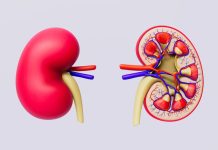
Researchers in Tromsø have made a significant breakthrough in the fight against antibiotic-resistant bacteria, a growing global health concern.
They’ve discovered a new substance in a common skin bacterium that could help tackle this challenge.
This substance, named Romsacin, shows promise in inhibiting the growth of bacteria that are resistant to current antibiotics.
Antibiotic resistance is a major issue worldwide.
It occurs when bacteria evolve and become immune to the effects of antibiotics, making common infections harder to treat. Each year, over a million people die due to antibiotic-resistant infections.
The team from UiT The Arctic University of Norway, specifically the research group for child and youth health, has been exploring bacteriocins.
Bacteriocins are natural substances produced by bacteria to suppress the growth of competing bacteria.
During their research, they found a new bacteriocin in a very common skin bacterium. This discovery is significant because it offers a new way to combat antibiotic-resistant bacteria that are often behind difficult-to-treat diseases.
Named after the Sami name for Tromsø, Romsa, Romsacin could potentially be developed into a new medication for infections that currently have no effective treatments.
However, researcher Runa Wolden at the Department of Clinical Medicine at UiT cautions that there’s still a long journey ahead before Romsacin can be developed into a usable drug.
The process of turning a discovery from basic research into a medicine is complex and can take 10–20 years.
Before any new antibiotic can be used in medical practice, it needs to go through rigorous testing to ensure it’s safe for humans.
Currently, the researchers don’t know exactly how Romsacin works in the human body. The path ahead involves extensive testing, navigating bureaucratic procedures, and handling marketing aspects.
Wolden explains that while it’s exciting to discover this new bacteriocin and its effectiveness against certain antibiotic-resistant bacteria, it’s still early days.
Much more research and development work is needed before they can confirm its potential as a new treatment option.
The bacteriocin Romsacin is produced by a bacterium called Staphylococcus haemolyticus. Interestingly, not all S. haemolyticus bacteria produce this substance, but it was found in one of the 174 isolates that the researchers have in their collection.
This discovery was part of a long-term project; about ten years ago, the researchers began collecting bacterial samples from healthy individuals.
They wanted to compare the S. haemolyticus found in healthy people with those in hospital patients. Years of experiments with these bacteria led to the discovery of Romsacin.
This research, published in the journal Microbiology Spectrum, represents a hopeful step in addressing the critical issue of antibiotic resistance.
With ongoing research and development, substances like Romsacin could pave the way for new, effective treatments for bacterial infections that currently challenge medical professionals worldwide.



